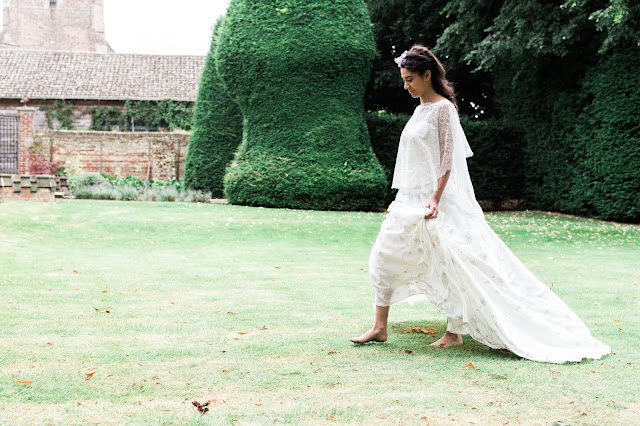Drafting wedding dress patterns
It's good to be back at work and to get back into a routine again.
This week I started work on a pattern for a wedding gown for one of my new brides. Often, to the outsider, the making of the patterns can be forgotten in this process, but after taking measurements, it's the first thing that happens!
I enjoy making patterns, it feels quite old-fashioned (and probably is) in this day and age, to be drafting a pattern using paper and pencil. But that is what I do for each and every person I make something for. Whether that be a simple shift dress or an elaborate bridal gown.
This goes some way towards what I term 'Bespoke'. 'Couture' also comes into it, but I shy away from that word because I think it is often misused within the bridal industry. (Things are called Couture when they are anything but...) In my opinion, it is having something designed and made for you, however simple, that is made to your specifications and wholly and completely made and finished for you, from scratch. Often using a lot of hand work, draping, hand-sewing and finishing.
This is the bit that is sometimes misunderstood. I don't make up a dress for you and then alter it; I make the patterns. I don't use commercial patterns. This is what gives you a design that fits you well. So when you come for a fitting, the toile (prototype) you are wearing has been made using a handmade pattern drafted to your measurements.
What you see above is the draft. It isn't cut up, but remains a point of referral. The individual pattern pieces are then traced off from the draft as below.
The pattern is only the beginning though, and by no means a fixed entity.
Laura, if you're reading, this is the start of your dress!
This week I started work on a pattern for a wedding gown for one of my new brides. Often, to the outsider, the making of the patterns can be forgotten in this process, but after taking measurements, it's the first thing that happens!
 | |
| Initial draft to measurements |
I enjoy making patterns, it feels quite old-fashioned (and probably is) in this day and age, to be drafting a pattern using paper and pencil. But that is what I do for each and every person I make something for. Whether that be a simple shift dress or an elaborate bridal gown.
 | |
| Adding shaping and style lines |
This goes some way towards what I term 'Bespoke'. 'Couture' also comes into it, but I shy away from that word because I think it is often misused within the bridal industry. (Things are called Couture when they are anything but...) In my opinion, it is having something designed and made for you, however simple, that is made to your specifications and wholly and completely made and finished for you, from scratch. Often using a lot of hand work, draping, hand-sewing and finishing.
 |
| About an hour or so later. |
This is the bit that is sometimes misunderstood. I don't make up a dress for you and then alter it; I make the patterns. I don't use commercial patterns. This is what gives you a design that fits you well. So when you come for a fitting, the toile (prototype) you are wearing has been made using a handmade pattern drafted to your measurements.
What you see above is the draft. It isn't cut up, but remains a point of referral. The individual pattern pieces are then traced off from the draft as below.
 |
| About 2.5 hours later |
The pattern is only the beginning though, and by no means a fixed entity.
Laura, if you're reading, this is the start of your dress!



Comments
Post a Comment
Thanks so much for your comment.